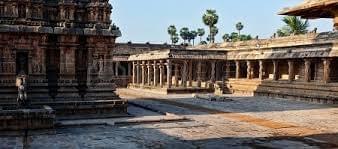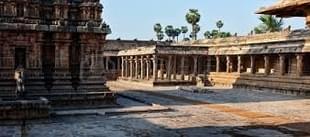Culture
Ramayanam in Early Tamil Nadu
Girish
Nov 29, 2013, 08:04 PM | Updated Apr 29, 2016, 01:10 PM IST
Save & read from anywhere!
Bookmark stories for easy access on any device or the Swarajya app.


The November lecture by the Chennai based Tamil Heritage group was on – “Ramayana from Sangam era till the Early Cholas era.” The topic is not just interesting but also is pregnant with many possibilities! For those who are fed with stories on intolerance and religious rancour in those days (e.g. impalement of the Jains) the study could point to some views on how an Epic primarily associated with Hindu faith was seen and handled in popular discourse. The website introduces the speaker K. S. Sankaranarayanan – “…hails from Karaikudi. He has a degree in Mechanical Engineering from Alagappa Chettiar College of Engineering and Technology, Karaikudi, MBA from Annamalai University and has done his Business Leadership from IIM Bangalore. Sankaranarayanan had an opportunity as a student to hear and learn from various eminent people in Karaikudi on diverse subjects like History, Tamil and Indian Culture. He is based in Chennai for the Last 24 years and is currently working with a leading business group in Chennai.
Sankaranarayanan’s passions are History, Tamil and Indian culture and he is researching on these subjects with specific reference to Tamil Nadu. One of his studies is on the various characters of Ramayanam as depicted in Tamil culture.” Maybe by the definitions of the “eminent ones” an amateur, but the quality of work presented was of a high order and would match the standards in any decent Institution. He used themes from Ramayana (e.g. Jatayu’s story, Surpanakha, Rama as a Purushottama) to explore literary and epigraphic references from the targeted period.
If you ask any Tamil of Ramayanam, the Creation of Kambar will be the salient one. But then Kamba Ramayanam is determined to be written in the 12th century. Shri Sankaranarayanan’s quest was for sources predating this masterly composition. Further Divya Prabhandam which certainly predates Kamba Ramayanam can be expected to have (mostly laudatory)references to Rama, being essentially Vaishnavite hymns. Hence he specifically seeks sources other than Divya Prabhandam. Using such literary sources like Sangam Literature (for the Tamils in the know, ParipADal, Thirukkural etc.) Thevaram, plus Silappadhikaram and Manimekalai, and lots of Epigraphic references, he explores the presence of Rama in Tamil Nadu in those days.
It will not be possible to do justice to his quest with a write-up. Those who can follow Tamil can view the full presentation at http://blog.tamilheritage.in/. Let me just mention a couple of points that stood out:
Contrary to what we get fed in popular discourse, there are many laudatory references to Rama not only in Thevaram (essentially Shaivaite hymns), but also in Silappadikaram and Manimekalai. So the idea that “Rama is not a Tamil God but an imported / foisted one from the north in later days” often propounded by the Kazhagam thinkers is without any merit.
Conflict between Hindu and Buddhist and Jain beliefs was in the theological area. It was far from being a confrontational issue. (On a separate note the stories of Shaivaites putting Jains to death have been repeatedly debunked elsewhere)
Reflecting on what was presented that day, the systematic deculturation that the “Dravidian” movement has effected on Tamil society will take decades to rectify, if at all. A whole generation of communities have been been fed with a hate agenda egging them to break from their roots and distance from what ought to have been their own heritage. And the movement did not have the cultural power to put something else appropriate in its place. Caricature was sold as modernity and the younger generation was frauded into to buy it. And that “younger generation” is in positions of power today spawning more of the same! A quick look at contemporary Tamil popular culture will confirm this!





